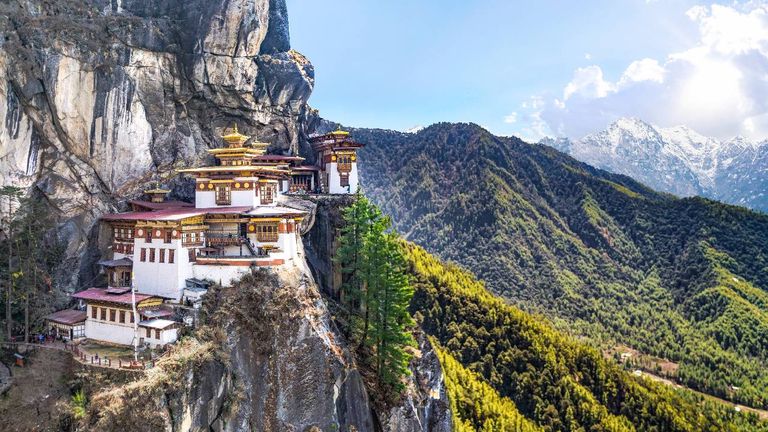News that the Trump administration is considering a travel ban for as many as 43 countries stirred up international headlines in March, prompting many in the tourism industry to worry about how new travel restrictions might impact business.
“In terms of bookings, absolutely we're hearing about it,” said David Hu, president and CEO of Pleasant Holidays.
Hu was quick to note that the Trump administration has not finalized anything yet, and the travel bans White House officials are reportedly considering would only impact inbound travel from certain nations. They would not keep U.S. residents from vacationing in impacted countries.
“But people start wondering whether or not there will be reciprocal travel bans,” Hu said.
While discussing some of the resulting confusion, Hu pointed specifically to a media statement released earlier this month by Antigua and Barbuda, a small Caribbean nation that found itself on the leaked draft list of countries where the Trump administration is reportedly considering bans on travel.
“The Government of Antigua and Barbuda wishes to reassure all travelers from the United States that travel between our two countries is not banned,” the March 19 statement reads. “Nationals and legal residents of the United States continue to enjoy visa-free entry when traveling to and from Antigua and Barbuda. We are aware of recent media reports speculating about potential travel bans. However, we emphasize that no such ban has been imposed.”
Dampening Demand?
Hu said Pleasant Holidays has already seen a decline in booking confidence for vacations later this year to Europe and Mexico since news broke about the Trump administration’s travel ban memo.
“People are definitely a lot more hesitant to commit,” Hu said. “Some of them are like, ‘Wow. Should we go? Should we not?’”
Hu conceded some of that may be a result of weakening consumer demand, spurred by growing economic concerns. But he said the travel ban rhetoric is impacting how some U.S. travelers are thinking about international vacations.
Once you're throwing all these bans out there, the perceptions of Americans start changing, and as you see in the press right now, Canadians, Europeans, Mexicans all view Americans very differently now.
“Once you're throwing all these bans out there, the perceptions of Americans start changing, and as you see in the press right now, Canadians, Europeans and Mexicans all view Americans very differently now,” Hu said. “And what that does is you have a lot of people start wondering whether they should be going outside the U.S. … So, people are afraid, and people start thinking, ‘OK, maybe it's not a good time to be exploring the world and pronouncing that we're Americans.’”
Rhonda Shumway, the president of TerraMar Travel in Hemet, California, said that while her agency has been very busy booking travel lately, she has been fielding some calls from clients about the proposed travel bans.
“There’ve been some questions and concerns, asking if we think it will impact travel,” Shumway said. “And my comment is, ‘Who knows? We don't know. We're just going to wait and see.’”
Shumway added that she always tries to remain nonpolitical with her clients.
“Sometimes they go off whatever side of the fence they're on,” she said with a chuckle. “But I just try to lend a listening ear and reassure them.”
Which Countries Made the List?
The leaked draft list of security official recommendations was first reported on by the New York Times on March 14 and separated the 43 countries into a red, orange and yellow classification system. Citizens from the 11 red list nations would face a complete travel ban, while countries on the orange and yellow lists would be subject to various visa restrictions, according to the newspaper.
 Bhutan’s unexpected inclusion on the red list of proposed travel bans has raised concern among tourism stakeholders.
Bhutan’s unexpected inclusion on the red list of proposed travel bans has raised concern among tourism stakeholders.
Credit: 2025 ultramansk/stock.adobe.comSome red list nations such as Iran, North Korea, Afghanistan and Somalia weren’t major surprises, but Bhutan’s red list designation raised some concern among tourism stakeholders. Other orange- and yellow-list surprises beyond Antigua and Barbuda included Cambodia, Dominica, St. Kitts and Nevis, St. Lucia and Zimbabwe.
Jessica Klement, vice president of advocacy for the American Society of Travel Advisors (ASTA), acknowledged that many of the countries on the proposed travel ban list are not places where U.S. travel advisors are sending clients, nor are they nations from which the U.S. welcomes many vacationers.
All signs are pointing to travel bans for specific countries just like we saw eight years ago.
“That said, we're a travel organization, and we believe travel brings the world closer together,” Klement said. “It powers human connection. It unifies people of all cultures and socioeconomic backgrounds and status. And there is a human part of travel that gets lost when you say people from specific countries are not allowed to visit the United States.”
Although the U.S. Travel Association (USTA) expects the total number of international arrivals will climb year over year in 2025 to more than 78 million, that total is still short of the nearly 80 million international arrivals the U.S. welcomed in 2019. And the USTA expects spending by international visitors this year will fall nearly $16 billion short of the $215.9 billion spent by international travelers across the nation in 2019.
When reached for comment about the leaked Trump administration’s travel ban memo, a USTA spokesperson said only that they are "closely monitoring the situation.”
And while there’s no official decision yet from the White House, Klement said ASTA expects the Trump administration will eventually enact some form of travel ban.
“All signs are pointing to travel bans for specific countries just like we saw eight years ago,” she said. “There was already an executive order [this] January that laid the groundwork.”